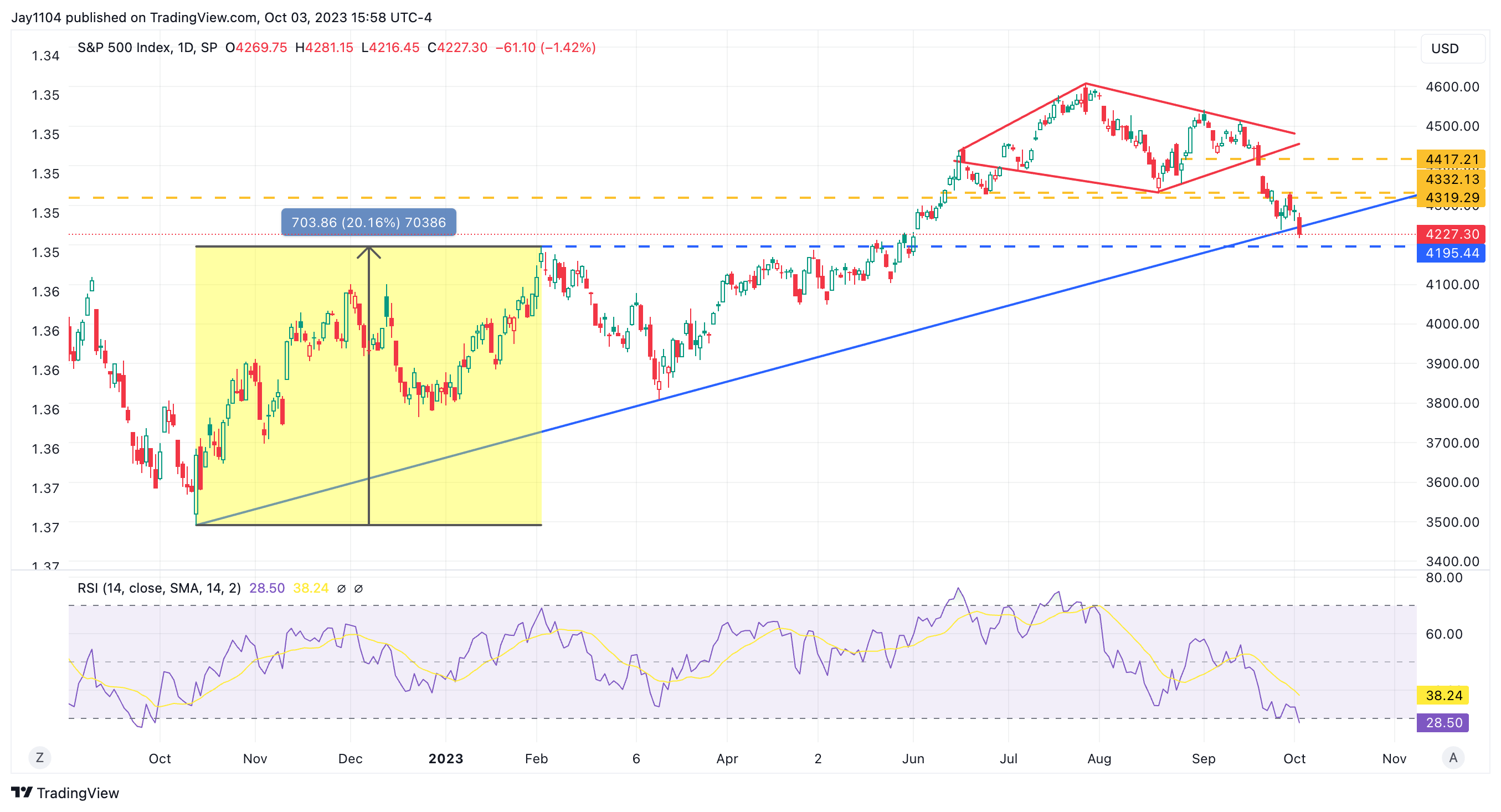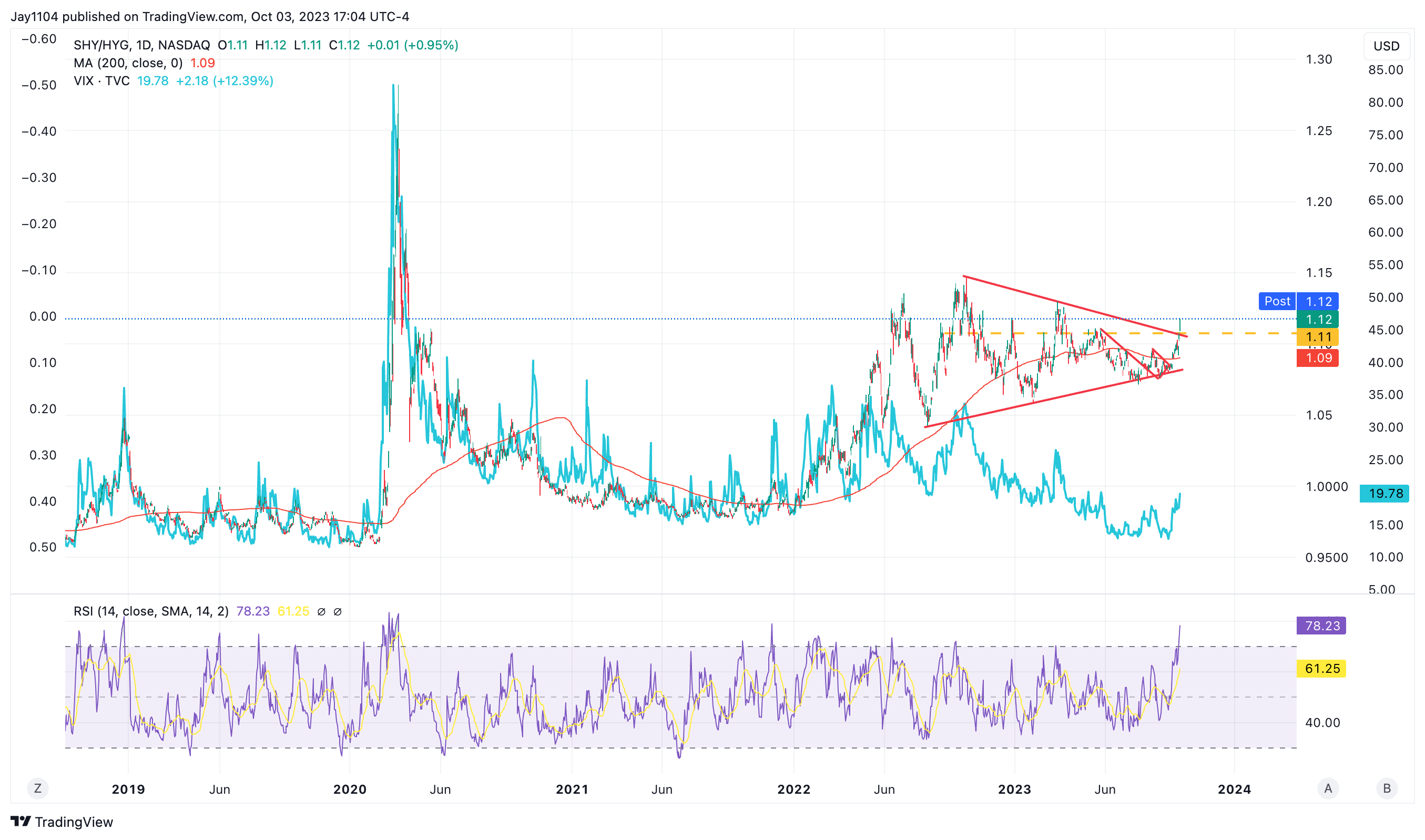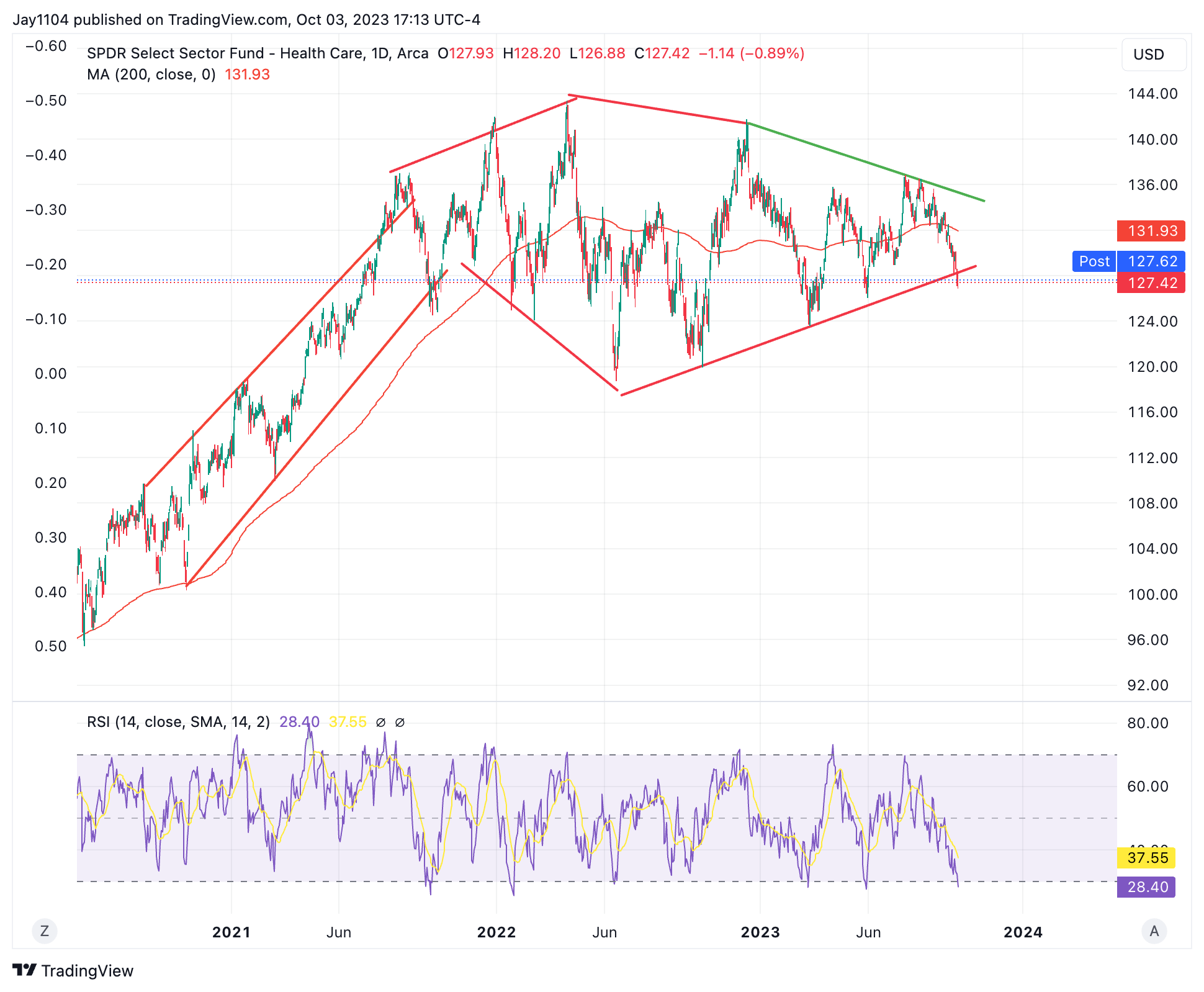Well, rates continue to increase following a hotter-than-expected and very volatile JOLTS data point. Now, rates are at a point where the economy will start to slow, and financial conditions are finally tightening.
At this point, the 2/10 spread is still -35 bps, and that means that the 10-year could still rise 35 bps from here to get us back to where it is flat with the 2-year.
There is no reason it couldn’t get there. This spread tops when the 10-year is 3% above the 2-year. Now, I’m not trying to suggest that the 10-year is going 8%, but what it tells us is that if the 2-year doesn’t start to come down at some point, there could be a lot more the 10-year can rise from here, and that would bring a lot of pain to equities. Today, the S&P 500 has declined approximately 8.5% from its peak on July 27. This decline signifies a breach of the head and shoulders neckline, a departure from a diamond pattern, and a fall below its October 2022 uptrend.
Today, the S&P 500 has declined approximately 8.5% from its peak on July 27. This decline signifies a breach of the head and shoulders neckline, a departure from a diamond pattern, and a fall below its October 2022 uptrend.
The index filled the gap at 4,220, effectively wiping out the entire summer rally. The 4,200 mark is crucial. Not only is it where the 200-day moving average resides, but dropping below 4,200 also means the S&P 500 no longer boasts a 20% gain from the October 2022 lows. It’s worth considering how many investors might grow anxious if the 200-day moving average is breached and the index is no longer in a “bull market.”
4200 is a big technical level and a very big psychological level, and if that breaks, I would think things get worse. Obviously, if you get weak job data on Friday and rates collapse, stocks will snap back. So suddenly, Friday’s job report just became a whole lot more important.
While the Nasdaq was down over 1.8% on the day, it’s in a bit better technical shape than the S&P 500 but not by much. The index has already broken its October uptrend and has now tested that level on a few occasions and been unable to get through that level, which is not a positive sign for the bulls. Additionally, it has been unable to maintain the neckline of the head and shoulders pattern around 14,670, on each attempt.
Something to watch at this point will be the spreads with high-yield debt, and one way to watch is the SHY to HYG ratio, which has spiked and broken above a downtrend, and out of a symmetrical triangle. The further this rises, the more pressure we will see on stocks because connected to the VIX.
Additionally, the spread between the 2/10 spread is key as well, as the S&P 500 just seems to be moving higher with credit spreads and the 2/10 spreads.
Finally, the health care ETF, XLV today broke an uptrend on the lower bound of a massive diamond pattern. Again you need to see follow through, but clearly, not a good sign. It seems any sector that pays a high dividend yield is getting hit very hard, and these once-viewed defensive sectors like Utilities, Staples, and Heath Care are no longer defensive.
